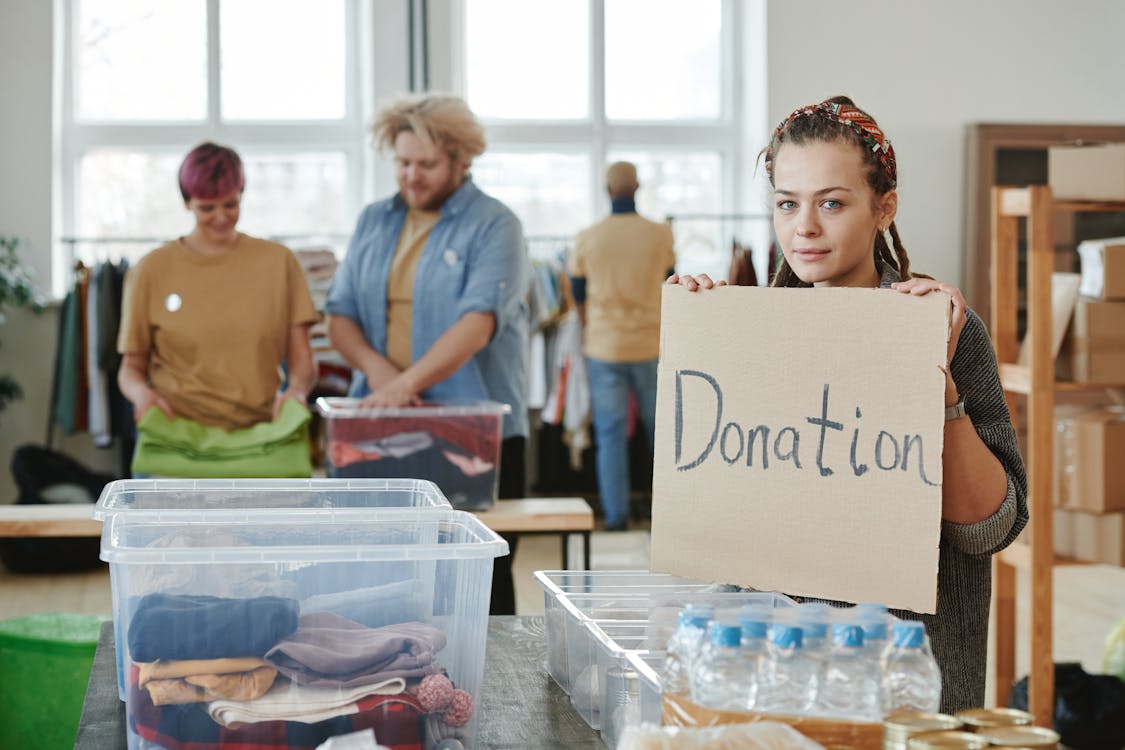Every piece of clothing you no longer wear can mean the world to someone in need. Women’s shelters across Illinois provide a lifeline for individuals escaping domestic violence, homelessness, or other challenging circumstances. Donating your clothes not only helps provide essential resources but also shows solidarity with women rebuilding their lives. This guide will walk you through the process of donating your clothing to Illinois women’s shelters and how you can make a meaningful impact.
Why Donate Clothes to Illinois Women’s Shelters?
Women’s shelters are often a refuge for individuals facing adversity, offering resources like housing, counseling, and job training. Clothing donations play a vital role in supporting these efforts by:
- Providing Basic Needs: Many women arrive at shelters with little more than the clothes on their backs. Your donations ensure they have access to essentials like professional attire, casual wear, and seasonal items.
- Fostering Dignity and Confidence: Wearing clean, well-fitting clothes can restore a sense of self-worth, especially when women are attending job interviews or integrating into new communities.
- Sustainability: Donating gently used items keeps them out of landfills and contributes to a more sustainable future.

Step-by-Step Guide to Donating Clothes in Illinois
Follow these steps to ensure your contributions reach those who need them most.
1. Assess What You Can Donate
Begin by sorting through your closet. Look for gently used items in good condition—pieces you’d feel comfortable giving to a friend. Some ideal items include:
- Professional attire (blazers, dresses, slacks)
- Casual clothing (jeans, tops, sweaters)
- Outerwear (coats, scarves, gloves)
- Undergarments and socks (must be new)
- Accessories (handbags, shoes, belts)
Pro Tip: Avoid donating heavily worn, stained, or damaged items, as shelters often lack the resources to repair or clean them.
2. Find Local Shelters Accepting Donations
Many Illinois women’s shelters accept clothing donations, but it’s essential to confirm their needs first. Some shelters may have seasonal requirements or prefer specific types of clothing. Popular organizations to consider include:
- Sarah’s Circle(Chicago) – A shelter providing services for women who are homeless or at risk.
- Connections for Abused Women and Their Children (CAWC)– Focuses on domestic violence survivors.
- WINGS Program(Palatine) – Offers housing and support for women and children escaping abuse.
Search online or call shelters in your area to learn about their current needs.
3. Clean and Organize Your Donations
Take the time to wash and fold all items before donating. This not only shows respect but also ensures the shelter can distribute them quickly. Place items in sturdy bags or boxes for easy transport.
4. Schedule a Drop-Off or Pick-Up
Some shelters offer donation drop-off times, while others may partner with organizations that provide free clothing donation pick-ups. If you’re in areas like Aurora or Streamwood, services like We Pickup Clothes make it even easier to contribute.
When scheduling, ask about:
- Preferred drop-off times
- Any required forms or labels for donations
- Parking or entrance details
5. Spread the Word
Encourage friends and family to join you in donating. Organize a mini clothing drive within your neighborhood, workplace, or school to multiply the impact.
What Happens to Your Donations?
After receiving your donated items, shelters carefully sort and distribute them according to the specific needs of their residents. This thoughtful process ensures that individuals receive the appropriate clothing for their unique circumstances. For example, professional attire is often provided to women who are preparing for job interviews or starting new employment opportunities, giving them the confidence to present themselves well.

Casual wear is typically distributed among residents to meet their everyday clothing needs, allowing them to feel comfortable and confident in their daily lives. Seasonal items are particularly essential during the harsh winters experienced in Illinois, as they help keep women and children warm and protected from the cold.
Any surplus items that the residents do not need may be shared with thrift stores that support the shelter or donated to other nonprofit organizations, further extending the positive impact of your generosity within the community. This cycle of giving helps many individuals and families in need.
Other Ways to Help Women’s Shelters in Illinois
If you’re unable to donate clothing, there are still many ways to support Illinois women’s shelters:
- Monetary Donations: Many shelters rely on financial contributions to fund their programs.
- Volunteer Time: Offer your skills to assist with organizing donations, running workshops, or mentoring residents.
- Donate Other Essentials: Shelters often need toiletries, baby supplies, and non-perishable food.
Impact of Your Donations
Every bag of clothing donated to Illinois women’s shelters tells a story of hope and compassion. Whether it’s a winter coat keeping someone warm or a blazer helping a woman land her dream job, your contributions can change lives. Remember, the smallest act of kindness can create a ripple effect of positivity.
Common Questions About Clothing Donations
- What condition should my clothes be in?
Clothing should be clean, in good condition, and free of stains, rips, or heavy wear. - Are there specific items shelters need the most?
Yes! Professional attire, winter coats, and new undergarments are always in high demand. - Can I donate directly to a shelter?
Absolutely. However, some shelters work through third-party organizations for clothing distribution, so it’s best to call ahead and confirm. - Are there any tax benefits to donating clothes?
Yes! Many shelters provide donation receipts for tax purposes, so be sure to ask when you drop off your items.
Take Action Today
Your closet could hold the key to a brighter future for someone in need. By following this guide, you can ensure your clothing donations are thoughtful, impactful, and appreciated by the women they help. Take the first step today by scheduling a pickup with a service like We Pickup Clothes.




